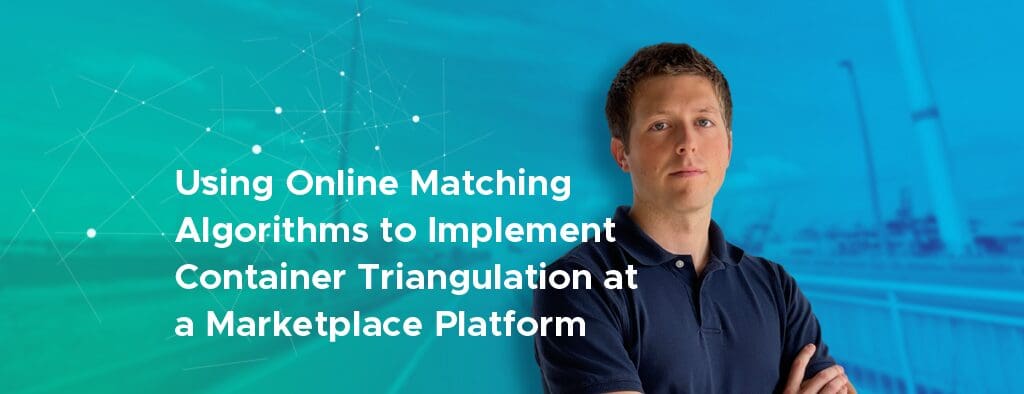My name is Justus Leijdens and I graduated last month from the Erasmus University Rotterdam for the Master in Operations Research and Quantitative Logistics. To graduate, I wrote a thesis at Uturn where I applied the acquired skills from my education to a challenge on the platform. For my thesis, I researched the concept of reusing containers on Uturn’s platform. To reuse a container (also called triangulation), one can execute an export shipment directly after an import without visiting a container depot in between the shipments. The challenge of the research is to choose the triangulations such that the efficiency over the entire time frame on the platform is increased as much as possible.
The Research
To optimize the chosen triangulations on the platform, a quantitative method is designed where we collect and analyze data. This online matching method makes optimal decisions in the present but also considers the likeliness of shipments to be included in a triangulation in the future. That consideration causes a shipment (import or export) to be included in a triangulation with a higher probability if it has been ignored for a triangulation previously.
Triangulation is executing an export directly after an import without visiting a container depot in between shipments.
The Online Matching Method
The method is able to find sets of triangulations on the platform with at least 90%-optimality. For data sets with more than 150 shipments, the method needs less than 0.01 seconds find those solutions. The results, that were obtained from testing the method on historic data from the platform, include some remarkable conclusions.
The requirements
The results of the research are strongly dependent on the level of cooperation between different parties involved in a shipment. The focus is mostly on two requirements of that cooperation in the paper. Those requirements are:
- the time windows of customer locations and
- the container operator of a shipment.
Both requirements are restrictive for the opportunities for triangulation, but are dependent of the decisions from involved parties.
The Models Compared
When comparing the method’s results for a model, in which no cooperation between parties is assumed, with the same results for a model with full cooperation assumed, we can notice a substantial difference in increased efficiency on the platform. Under the former model, the method can combine shipments such that up to 0.6% of the total required driving distance on the platform is reduced. However, a reduction up to 3.9% of the total required driving distance on the platform can be achieved under the model with full cooperation assumed.
Reduction up to 3.9% of the total required driving distance on UTURN can be achieved with full cooperation assumed.
The Conclusion
Hence, the concept of triangulation has the potential to reduce the required capacity for container transport. The exact reduction is strongly dependent on the level of cooperation among parties involved in the shipment. More cooperation can multiply the efficiency increase on the platform with up to six times.

Justus Leijdens
As part of his graduation for the Master, in Operations Research and Quantitative Logistics at the Erasmus University in Rotterdam, Justus Leijdens conducted research at UTURN into the reuse (triangulations) of containers on the UTURN platform.


